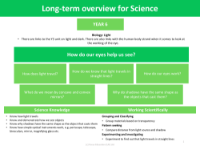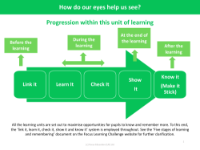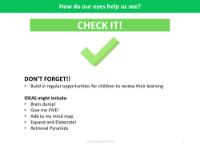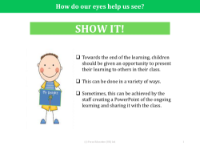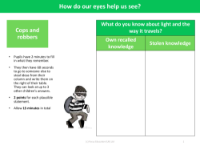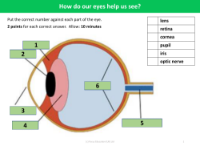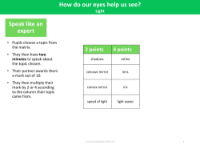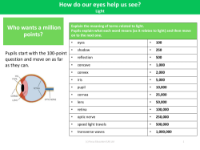How do our eyes help us see? - Tick the correct answer - Light - Year 6
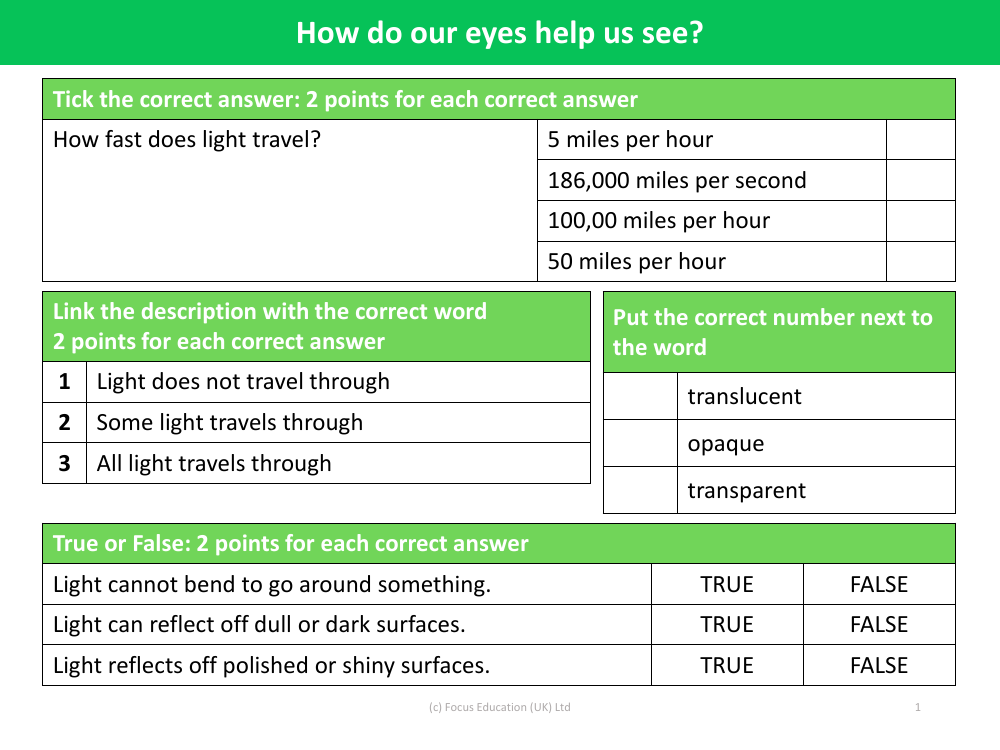
Science Resource Description
Our eyes are remarkable organs that allow us to perceive the world around us through the process of vision. To understand how our eyes help us see, it's essential to know a bit about light and its properties. First off, the speed of light is a fundamental constant in physics, and it travels at an astonishing speed of 186,000 miles per second. This incredible velocity enables light to reach us from distant sources almost instantaneously on a human scale.
When it comes to light interacting with different materials, there are specific terms used to describe how light passes through them. Materials that light cannot travel through are referred to as 'opaque.' In contrast, 'translucent' materials allow some light to pass through, causing objects on the other side to appear blurred. Lastly, 'transparent' materials let all light pass through them, making objects on the other side appear clearly. Regarding the behavior of light, it is true that light can reflect off polished or shiny surfaces, allowing us to see objects as if they were in front of a mirror. However, it's a misconception that light cannot bend; in certain conditions, such as passing through a lens, light can indeed bend—a process known as refraction. Moreover, even though it's less efficient than with shiny surfaces, light can also reflect off dull or dark surfaces, which is why we can see these objects at all.

